
Toha is not very good at cooking.
But these days, working from home has become mainstream, and going out is a hassle, so I sometimes cook meals.
So it occurred to me recently. Making 3DCG and cooking are a bit similar.
In this article, I will discuss the similarities between 3DCG and cooking, and give my thoughts on those who want to make 3DCG their job and those who want to make it as a hobby.
If there is anyone out there who has lost sight of the 3DCG they want to do, there may be a little something that can be helpful.
- In both 3DCG & Cooking, there are people in various positions on the making side
- In both 3DCG & Cooking, anyone can make it if they follow the recipes
- In both 3DCG & Cooking, the endless world with someone better than you
- Why are you making it? The motive and purpose for making 3DCG are important
- Summary: 3DCG and Cooking are similar. There is a good distance between the two for each person
- Extra: By the way, in the case of Toha
In both 3DCG & Cooking, there are people in various positions on the making side
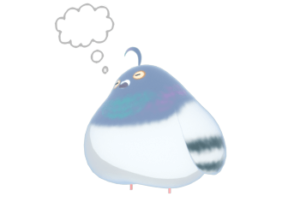
The first thing I think is that there are people in various positions on the making side of both 3DCG and cooking.
I made a little distribution chart about people that make 3DCG & cooking for easy understanding. It is just a chart of my thoughts, but I think it is almost good.

What do you think?
People who don't cook as a job refer to people who, in cooking, cook for their families or as a hobby for enjoyment.
People who cook as a job refers to people who, in terms of cooking, work in restaurant kitchens, or serve food in private restaurants.
I am sure that many of you who are reading this article right now are making 3DCG, and I am sure that you have a feeling that you are somewhere around here.
This figure does not always apply to any one square, but rather it is natural for it to apply to multiple squares.
It is only a distribution chart of those who make it, so it is natural that those who have never made 3DCG or food still do not fit anywhere.
In both 3DCG & Cooking, anyone can make it if they follow the recipes
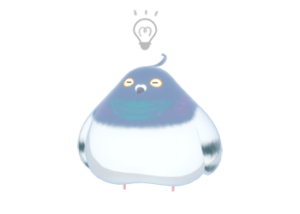
This is the first reason why Toha thought that 3DCG and cooking might be similar...
In both 3DCG and cooking, anyone can make almost the same thing if they follow a recipe.
I am a terrible cook, so when I cook, I search for recipes on my phone, and cook them according to the recipe... then, I can cook good food too!
The same can be said for 3DCG.
For example, a tutorial video such as "Let's make XX with 3DCG" is a recipe.
If you watch the video and mimic it with your hands, you can make almost the same thing yourself as you are making in the video. Anyone can make a beautiful 3DCG that follows a recipe.
(The video that Toha is taking a bit of is also a very recipe-like one.)
This is actually a great thing, and I'm so grateful that recipes and tutorials are lying all over the Internet!
Thanks to this, even beginners can easily create delicious food and beautiful 3DCG.
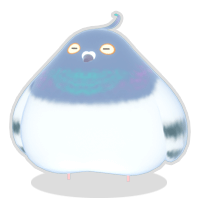
I too can cook!
And while some people start just following a recipe, others become more and more interested and want to try their arrangements and learn to make them better.
Shu-Ha-RiAs the saying goes, at first, everyone does exactly what their teacher or mentor teaches them. It is only in the next stage that we are able to apply what we have learned and use it as our own.
What is Shu-Ha-Ri...
It means the basic attitude or order in which one learns or approaches things. Originally used in the martial arts and tea ceremony, it has since come to be used universally wherever learning takes place.
The first step in learning the kata, "Shu" is to learn the kata.
Career Consultation Office for Everyone than
The second stage, "Ha" in which the mold is applied and improved.
The third stage of becoming independent of the mold, "Ri".
But we also want to remember that "not everyone is aiming to be Shu-Ha-Ri". I think there are some people for whom "Shu" is enough, and some people for whom even "Ha" is enough.
In terms of cooking, Toha is just fine at the "Shu" stage, where he can follow a recipe exactly and has no desire to become any better or create an original recipe.
I am sure the same can be said for 3DCG.
In both 3DCG & Cooking, the endless world with someone better than you
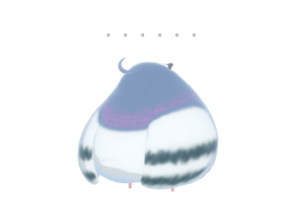
Another big reason why I think 3DCG and cooking are similar. It is this.
In both 3DCG and cooking, there is an endless world where no matter how far you go, there is always someone above you.
In fact, I think this applies to all things.
However, "Cooking" has genres such as Japanese, Chinese, and French, and ranges from casual cooking to first-class haute cuisine, and in all of them, there are people who are professionals in their fields.
I think this is very similar to 3DCG.
"3DCG" has many different types. Even if we look at modeling alone, there are different types of modeling, such as character or background, game or video, cel-look or photo-realistic, product or figure prototype, and so on...
In each of these branches, many professionals are active on the front lines of their respective fields, and at the same time, some people are not making these products for work but are very skilled at it.
...Isn't it really an endless world~!
But what Toha is trying to say is not that it is endless and therefore hard or dangerous.
What Toha is trying to say is that Not everyone has to aim for the end.
Because I think there is a lot of demand for various places in the middle stages that are not the end.
Some people want a high-end French course meal, while others want a fast, cheap, and tasty beef bowl.
Sometimes a reasonably priced French meal daily or a slightly more expensive special menu item, a beef bowl, may be called for.
I believe the same can be said for 3DCG.
The bottom line is supply and demand. If something is in demand, it makes a lot of sense to create it. Everyone who can create and offer something for which there is demand is amazing. Being able to create something that people want is something to be proud of.
On the other hand, it is also amazing to see people who can explore knowledge and technology to reach the most advanced and farthest ends. As a result of this quest, they can reach places that were previously near the end of the road, and new demands are born there.
In other words.
In the world of 3DCG, some are going to the end of the line and pushing forward, and those who are not going to the end of the line but standing still and answering the demand... either one is fine and both are great!
That's what I mean.
Somehow, I sometimes get the feeling that people who pursue the end of the road are more amazing than those who do not.
But I don't think care either way. Because they're both awesome and they both make sense~.
Why are you making it? The motive and purpose for making 3DCG are important
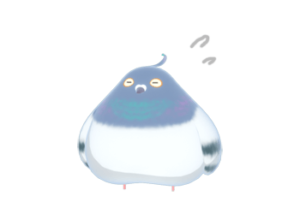
In the endless world of 3DCG, you want to be careful not to get lost in the uncertainty of where you are going.
Let me remind you for a moment here of the people distribution chart that 3DCG and cooking make.

Some can follow a recipe exactly, those who can create their original, and those who teach while making, and there is also a mix of those who make the food for work and those who do not.
Besides, even if you only look at the modeling, you can see whether it is a character or a background, whether it is a game or a video...and so on.
Since there are so many people making 3DCG from so many different perspectives, the information about 3DCG lying around on the Internet is naturally a jumble of these scattered around.
I would like to properly consider whether the information is appropriate for me before taking it in.
To this end, it is ideal for you to have a clear understanding of what kind of position you want to take in 3DCG production.
The title of this article is "Do it for work? Do it as a hobby?" is one of those positions.
Nowadays, 3DCG has become something that individuals can easily get their hands on as a hobby. But being able to enjoy making something as a hobby is not necessarily the same as being able to continue to enjoy making it as a job.
In the 3DCG and game industries, we sometimes hear "It is better to keep your hobby as a hobby and not a job".
Some people have a point and say they no longer enjoy playing games after working for a video game company.
But there is also an opposite argument, with some people saying "creators can't work unless they have no boundary between work and hobby".
In fact, some 3DCG artists spend their weekdays at work and their weekends at home, creating 3DCG by choice.
Ultimately, this is an area that depends on each person.
So you need to listen to yourself, not to others, and you need to do it right.
Why make 3DCG?
What kind of 3DCG do you want to create?
Do you want to make it a hobby or do you want to make it work?
If you want to work for a 3dcg company, you're in the right place. is required. If you want to move up in the company, you must be
is required. If you want to move up in the company, you must be .
.
If you want to sell your own original model, of course  Here it is.
Here it is.
On the other hand, if you want to make 3DCG as a hobby, there are no rules and you are free to do whatever you want.
 You can enjoy 3DCG with
You can enjoy 3DCG with You can also try to modify the model by becoming.
You can also try to modify the model by becoming.
The 3DCG technique, which is the mastery of personal taste and taste, is made public and It is also a good idea to become a "buzz" on social networking sites.
It is also a good idea to become a "buzz" on social networking sites.
Own motivation and purpose for creating 3DCG is a compass to avoid getting lost in the vast 3DCG world.
Why make 3DCG?
What kind of 3DCG do you want to create?
I think it's totally fine to start 3DCG with "I want to try it, Sounds fun!".
But, if you are ever unsure of where you are going as you continue to create 3DCG, I hope you will reconfirm your motives and objectives.
As the phrase "Shu-Ha-Ri" indicates, motives and objectives gradually change.
Things change without you even realizing it, so sometimes it's good to think back and ask yourself, "Why do I want to make 3DCG? What kind of 3DCG do I want to make?".
Summary: 3DCG and Cooking are similar. There is a good distance between the two for each person
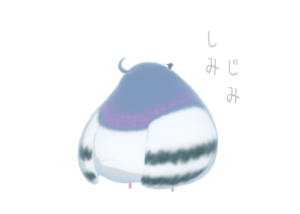
3DCG and cooking are both things that various people are involved in, each in his or her capacity.
In terms of cooking, the world is full of people ranging from beginners trying to cook for themselves for the first time to world-renowned, top-notch chefs.
And between the beginners and the very best, there is a world of hidden master chefs who are well known by those in the know, set restaurants that are loved by the locals for their moderate prices and taste, and people who can make superb food but only like to cook as a hobby.
Think of this in terms of 3DCG.
I think that people who do 3DCG are really from all walks of life.
I am sure that each person has his/her own "good distance".
Whether you enjoy 3DCG as a hobby, create 3DCG as a job, or do 3DCG as a hobby and for practical use, I hope everyone will cherish a "good distance" from each other.
If you continue to create 3DCG without losing sight of this sense of distance, you may gradually become lazy in creating 3DCG, or you may even grow to dislike 3DCG itself.
So I would like you to check with them from time to time.
Why make 3DCG?
What kind of 3DCG do you want to create?
You need to ask yourself, not what someone else says, but what you are, and you need to ask yourself properly!
Extra: By the way, in the case of Toha
By the way. I have been making 3DCG for more than 10 years...
I have never wanted to make 3DCG as a hobby.
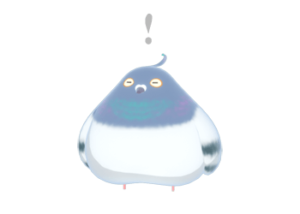
Looking back as I write this article... there seriously wasn't a single piece of 3DCG I made purely as a hobby!
I have created original works to include in job portfolios, but that is not at all what I mean when I say that I created them as a hobby.
Toha's initial motivation for wanting to create 3DCG was "because I want to work making games".
Maybe that's why, or maybe it's because I don't think I want to make 3DCG as a hobby. If I could have time for a hobby, I would rather play games or read the manga.
Back when Toha was still making 3DCG at his company, there were quite a few 3DCG artists around me who "had no boundary between work and hobby".
When I heard that he works 5 days a week making 3DCG at the office and does independent 3DCG work at home on weekends, I thought to myself, "Wow...that's great".
I thought, If I don't do that, I will be left behind and may not be able to survive in this industry.
After all, Toha did not make 3DCG at home on weekends.
But I am glad I did. If I had forced myself to work on 3DCG for a week, I might have hated making 3DCG.
On the other hand, even though I was making games at a game company five days a week, I wanted to play games for hours on weekends, and even now I never get tired of playing games, so I guess it depends on the person.
Please be honest with your feelings.

Because your number one partner is yourself!


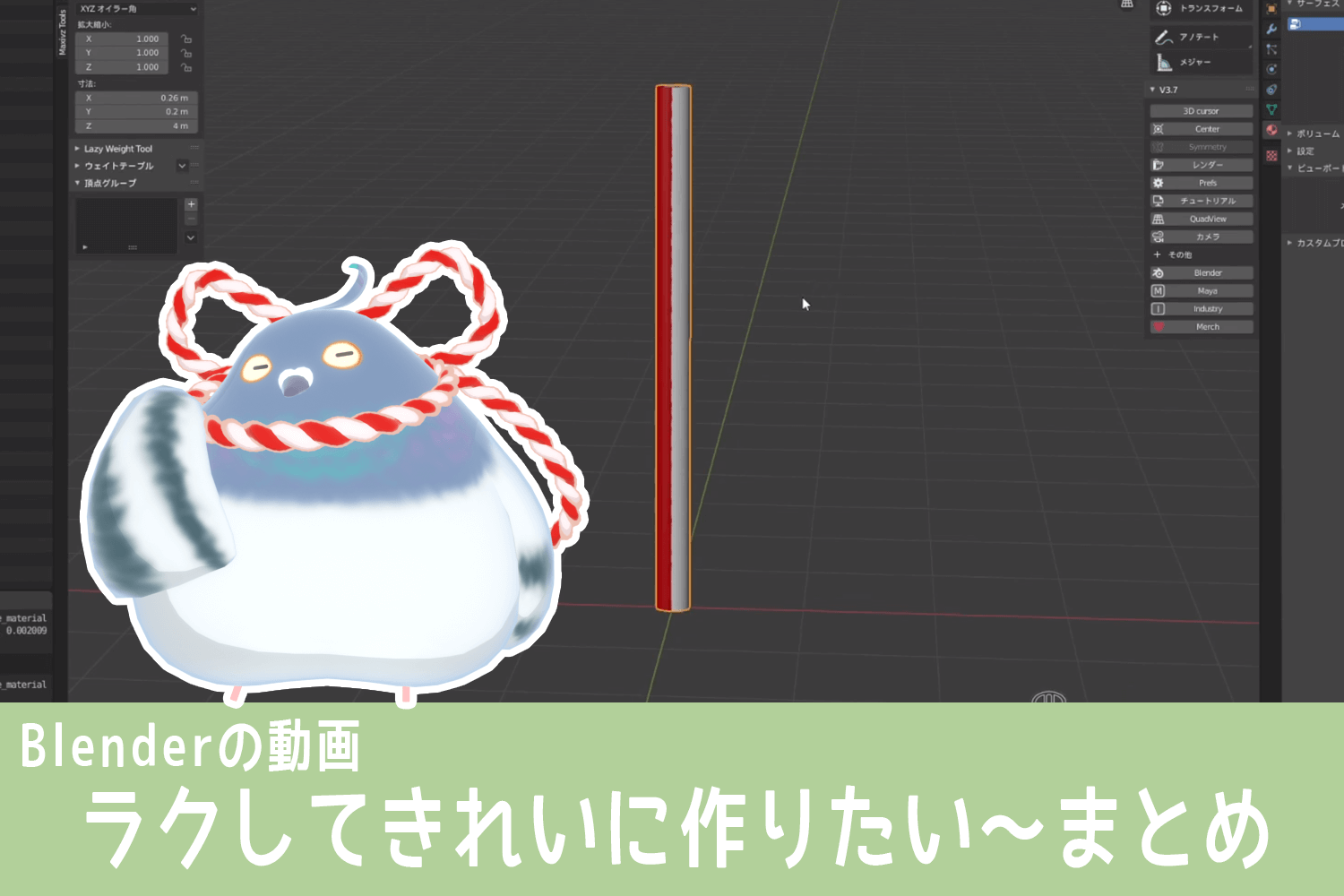
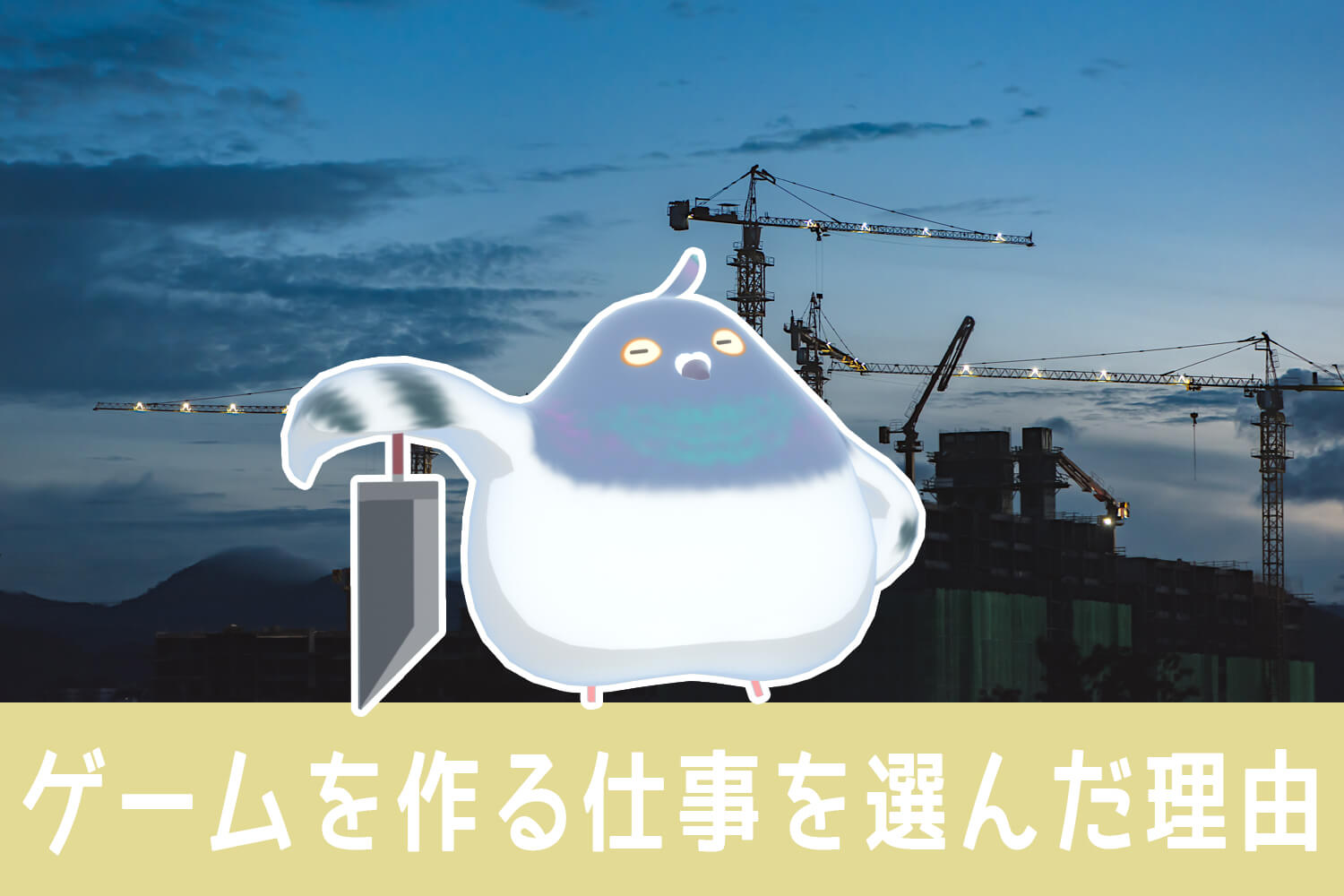

List of comments
I read this one again.
I had been in a completely different line of work and had not experienced the work of making things.
I don't know if I understand what you are writing, Toha.
I stopped and spent a few days doing things I enjoyed, like playing games and watching cartoons.
He wanted to make this character cool.
I found myself going outside and looking at the wrinkles in people's clothes and trying to draw them or do some sketching lol.
In my case, after reevaluating the situation, it may be that I want to make a job = I want to see a work created by a large number of people.
In my previous job, I had to work with people, and it was difficult every day, but there were times when the wheels fell into place, and it was great.
I imagine it would be great to be one of those little ones in a game, anime, or movie!
Of course, this may be my nonsense, not being in the business.
Also, perhaps because of my previous work, I am attracted to CG companies that produce many works for children, as well as games and animated films.
I was also thinking of doing some character modeling there.
First of all, I'm going to study the creases in the clothes on the ace chest turntable of Mr. Yu Haibara by re-creating them.
There are many places where my interpretation of the wrinkles in my clothes is wrong, especially since I have made a roundabout way of making them, so now I am touching up the figures and looking at books on how to put wrinkles, etc., and drawing blueprints.
But it's not easy.
If you have any thoughts on Toha's ideas about wrinkles in clothes, I would be very grateful to hear them.
Hello househusband, thank you for your comment.
Is it a wrinkle in the clothes - very difficult!
When I was at the company, I made a lot of character models with a look where all the details of the wrinkles on the clothes were drawn on the textures, but I really don't know how many times I have already revised them because the wrinkles are almost always caught in the check. LOL!
Toha has never been good at wrinkling clothes. But after a lot of work to correct them, I now know a little bit about them.
Toha often says that there are two kinds of things needed to become good at 3DCG: those that require understanding the concept and those that require doing it in numbers, and both are needed to make wrinkles in clothes well.
First of all, how do wrinkles form? How and where do they form? If you don't understand this, you will have a hard time with trial-and-error every time. If you don't understand this, you will end up struggling through trial and error every time.
Wrinkles are formed where it's pulled, where it's bent often, where it's aborted and doubled over... and so on.
I think this tweet also explains the "logic" very clearly.
https://x.com/simodasketch/status/1719657333784264963?s=20
https://x.com/simodasketch/status/1725097411268510071?s=20
As you understand these theories and make many creases, and as you accumulate "familiarity" and "experience," you will gradually become able to make creases better and better.
It would be quite difficult to create a perfect wrinkle from the beginning or to be able to create a good wrinkle overnight.
But fortunately, 3D models can be modified, so even if you don't get it right the first time, you can always make it look good someday if you think about the logic and look carefully at the reference material for the wrinkles in the clothing and modify it.
Sometimes it is a good idea to delete the wrinkle area once created and create a new one. It is often possible to model better that way without being pulled back by the old topology.
Another way is to change the way it is made.
Details such as wrinkles are easier to create by sculpting than by modeling directly with polygons, so it is also good to use the sculpting->retopology method.
In fact, in game models, details such as wrinkles are often sculpted on the high model, and then normal maps are created and transferred to the low model to add details.
There is also a way to use textures to represent the model without making it serious with the model.
The Fushikuro-kun model that Toha uploaded to sketchfab has a celluloid look, but the wrinkles on the collar are made by the model and the rest is drawn with textures.
(sketchfab is a good reference to see the topology)
https://x.com/tohawork/status/1546840949879640064?s=20
In 3D modeling, Toha believes that wrinkles in clothing are one of the elements that make a character model look cool.
In extreme cases, if a character model looks "cool and comfortable" without wrinkles in the clothes, it is okay to not make wrinkles. I think this is a good idea.
If an outfit has a lot of ornamentation or patterns and many fancy parts, it will look cool without much wrinkling. On the other hand, if the clothes are simple and monochromatic, such as school uniforms, cool wrinkle details are necessary to make them look cool.
The figure is a very good reference because the wrinkles in the figure's clothing are basically cool sculpting. I often refer to Toha as well.
However, figures have fixed poses and do not move. A figure model can focus on modeling wrinkles that look cool in that pose, but a game model can move in various ways. This is a big difference.
If you are assuming a game model, you may want to refer to a game model as well.
The Persona characters are wearing school uniforms and the models' looks are not the realistic type, so you might want to take a look - Yusuke Kitagawa's clothes are particularly simple, so the wrinkle detailing makes them look cool.
https://livedoor.blogimg.jp/west_and_east/imgs/8/c/8cc2f696.jpg
https://pbs.twimg.com/media/EMSPmJrVUAAJCP2.jpg
This is what I wrote at length.
What you observe and think about will never be wasted, so please take the time to make the most of it.